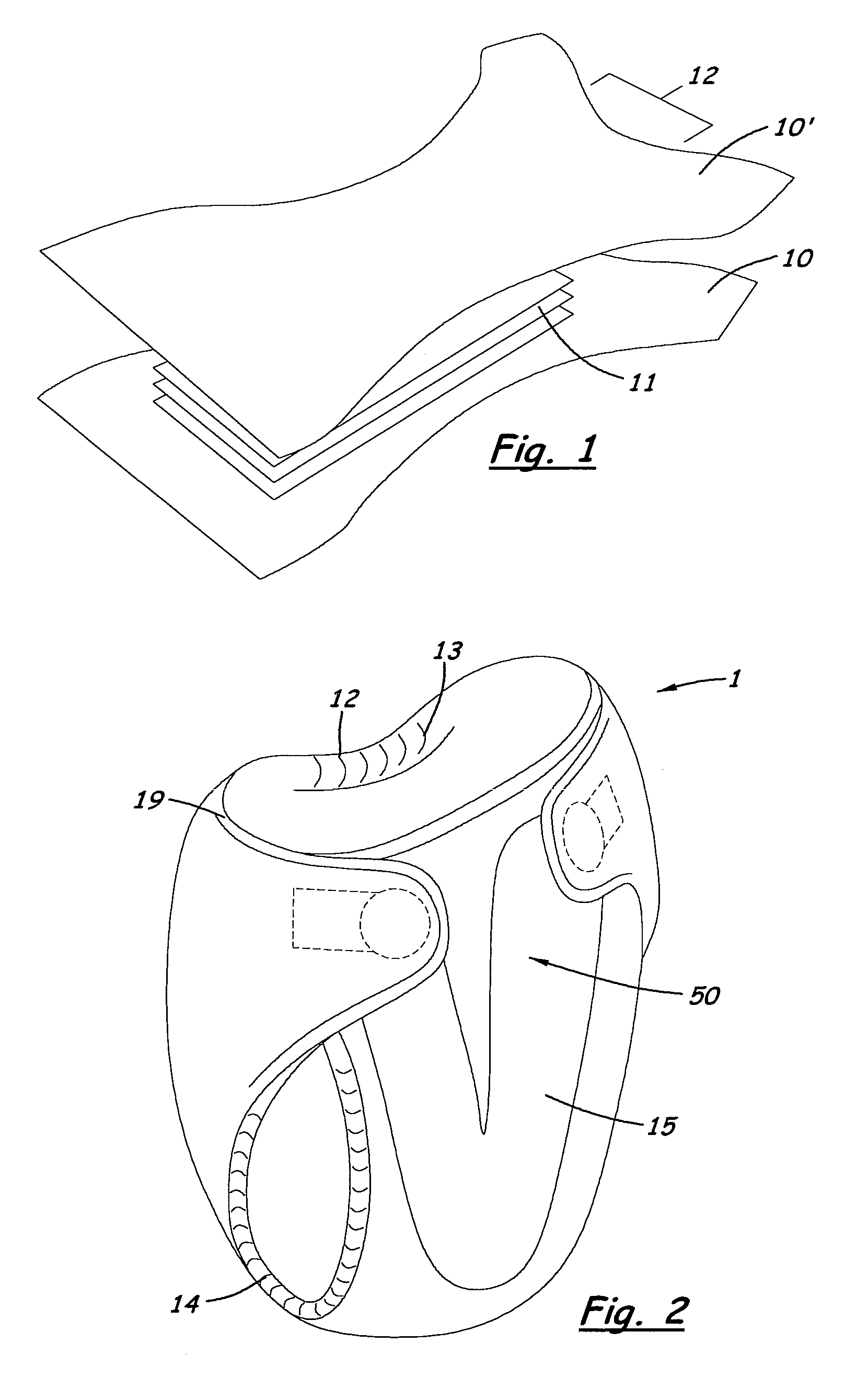Highly-adjustable, fitted cloth diaper
a cloth diaper, high-adjustable technology, applied in the field of cloth diapers, can solve the problem that the outermost fabric layer of the diaper becomes very dry to the touch, and achieve the effect of effective and comfortable fit, changing the overall size of the diaper, and high-improper leakag
- Summary
- Abstract
- Description
- Claims
- Application Information
AI Technical Summary
Benefits of technology
Problems solved by technology
Method used
Image
Examples
Embodiment Construction
[0025]Referring to the Figures, there are shown two, but not the only, embodiments, of the invented fitted, highly-adjustable cloth diaper.
[0026]The preferred diapers 1, 100 comprise very stretchy, soft, fabric panels 10. 10′ with hydrophilic and wicking properties, wherein said panels 10 are the outermost and innermost panels of the diaper, as shown to best advantage in FIG. 1. While wicking fabrics serve the wicking function to different degrees, the especially-preferred fabric for panels 10, 10′ has the capacity to hold water before it is transported to the diaper's inner absorbent layer(s) 11, but quickly wicks to its inner surface and to said inner absorbent layer(s) 11. This results in the outer surfaces of the hydrophilic fabric panels 10, 10′ actually becoming dryer as time passes after the infant wets. As a result of the combination of the hydrophilic and wicking panels and the inner-super absorbent layer(s) 11, the outer surfaces of the preferred panels 10, 10′ are left so...
PUM
 Login to View More
Login to View More Abstract
Description
Claims
Application Information
 Login to View More
Login to View More - R&D
- Intellectual Property
- Life Sciences
- Materials
- Tech Scout
- Unparalleled Data Quality
- Higher Quality Content
- 60% Fewer Hallucinations
Browse by: Latest US Patents, China's latest patents, Technical Efficacy Thesaurus, Application Domain, Technology Topic, Popular Technical Reports.
© 2025 PatSnap. All rights reserved.Legal|Privacy policy|Modern Slavery Act Transparency Statement|Sitemap|About US| Contact US: help@patsnap.com



